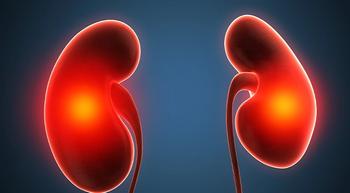
Intravenous and Direct-to-Abdomen Chemotherapy Plus Avastin Lead to Similar Outcomes in Advanced Ovarian Cancer
There were no major differences in survival when comparing intravenous and intraperitoneal chemotherapy plus Avastin in patients with advanced ovarian cancer, research shows.
There were no differences in outcomes observed for patients with advanced ovarian cancer who received intravenous (IV) or intraperitoneal (directly to the abdomen) chemotherapy plus Avastin (bevacizumab), according to recent findings from the phase 3 GOG-0252 clinical trial that were presented at the Society of Gynecologic Oncology 2022 Annual Meeting on Women’s Cancers.
Survival outcomes were similar regardless of patients’ CA-125 levels and the presence of microscopic disease.
“I had wanted to do this presentation because of a concern that I have that there is currently an excessive use of neoadjuvant chemotherapy. I (also) fear that there is probably not proper selection (as to) who is a good candidate for primary surgical debulking. So, I give this presentation as a reminder that long-term survival is more likely when the patient is left without any residual disease and chemotherapy produces a very low CA-125 (level) tumor marker of less than 10,” said Dr. Joan Walker, a professor of the Section of Gynecologic Oncology at the Stephenson Cancer Center, University of Oklahoma College of Medicine, during a presentation of the data.
CA-125 levels are measured in patient’s blood. High levels indicate the potential presence of ovarian cancer or disease that is not responding to treatment, while low levels can indicate the absence or disease or cancer that is shrinking.
About GOG-0252
During cycles 1 to 6, patients could receive 1 of 3 regimens, all of which included 15 mg/kg of intravenous Avastin on day 1 starting cycle 2. The regimens were:
- Arm 1: 80 mg/m2 of intravenous paclitaxel on days 1, 8, and 15, and intravenous carboplatin at AUC 6 on day 1.
- Arm 2: included 80 mg/m2 of intravenous paclitaxel on days 1, 8, and 15, and intraperitoneal carboplatin at AUC 6 on day 1.
- Arm 3: 135 mg/m2 of intravenous paclitaxel on day 1, 75 mg/m2 of intraperitoneal cisplatin on day 2, and 60 mg/m2 of intraperitoneal paclitaxel on day 8.
From cycle 7 to 22, all patients received 15 mg of intravenous Avastin on day 1.
To be eligible for the trial, patients needed to have stage 2 to 3 epithelial carcinoma of the ovary, fallopian tube or peritoneum. Patients also needed to have had their cancer surgically removed with less than or equal to 1 cm remaining. Exploratory eligibility criteria included patients with suboptimal resection (7%) and those with stage 4 disease (5%).
From July 2009 to November 2011, a total of 1,560 patients were enrolled. The median age was 58 years, and most patients were White. Additionally, most patients had stage 3 disease (84%), grade 3 serous disease (2%) and no residual disease (57%).
Survival Outcomes Are Similar
Median progression-free survival (the time from treatment until the disease grows) in the intravenous carboplatin arm was 35.9 months, 36.8 months for intraperitoneal carboplatin and 35.5 months for intraperitoneal cisplatin.
When assessing progression-free survival by CA-125 prior to the fourth treatment cycle, investigators reported medians of 44.2 months and 28.5 months in those with baseline CA-125 levels of 10 IU/ml or lower and greater than 10 IU/ml, respectively.
Additionally, median overall survival (time from treatment until death by any cause) across the three groups was 106.6 months for intravenous carboplatin, 114.2 months for intraperitoneal carboplatin and 107.9 months for intraperitoneal cisplatin for those with microscopic disease only with 10 years of follow up.
When assessing overall survival by CA-125 prior to the fourth treatment cycle, investigators reported a median overall survival of 89 months in the CA-125 greater than 10 IU/ml group. Median overall survival was not reached in the CA-125 of 10 IU/ml or lower group at over 10 years, since so many patients in this cohort were still alive and an average survival time could not be calculated.
In terms of safety, 90% of patients across all arms had severe or worse side effects. In arm 1, 5.3% of patients experienced severe gastrointestinal fistula (opening and leaking of the stomach or intestines), necrosis and leak, and 30% had neuropathy of moderate or worse. In arm 3, 20.5% had severe hypertension and 11.2% had severe nausea and vomiting.
“There was no difference in treatment arm by (progression-free survival) and (overall survival) in patients with no macroscopic disease. (Patients) lived a long time and we want to continue to provide that effort to our patients with ovarian cancer,” Walker said. “The goal is to get to no gross residual disease and to get a CA-125 (level) of less than 10 after three cycles. Those are the patients who can live and have a good quality of life.”
For more news on cancer updates, research and education, don’t forget to
This article was originally published on Cancer Network as, “Similar Survival Outcomes Persist With Intravenous Vs Intraperitoneal Chemo Plus Bevacizumab in Advanced Ovarian Cancer.”




